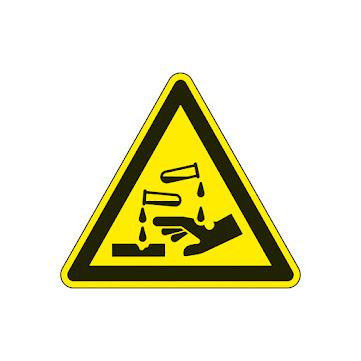The Bamako Convention: Africa's Fight Against Hazardous Waste Imports
The Bamako
Convention
The Bamako Convention is an important international treaty designed to prevent the import of hazardous waste into Africa and to manage the transboundary movement and disposal of hazardous waste within Africa. The Convention was negotiated by 12 African nations of the Organisation of African Unity at Bamako, Mali, in January 1991, and came into force in 1998.
The Convention was created in response to the increasing concern over the export of hazardous waste from developed countries to less developed countries, particularly in Africa, which has historically been a dumping ground for toxic waste. Many developed countries have been exporting their hazardous waste to Africa for many years, as it is cheaper and easier to dispose of the waste in developing countries that have fewer environmental regulations.
One of the most prominent cases of hazardous waste export to Africa occurred in 1987 when 18,000 barrels of hazardous waste, including polychlorinated biphenyls (PCBs), were imported into Nigeria from Italy by the companies Ecomar and Jelly Wax. The waste was stored on the farm of a local farmer named Sunday Nana, who had agreed to store the waste in exchange for $100 per month. The barrels were eventually discovered in the port of Koko and led to protests that closed three Italian ports when the waste was shipped back to Italy.
The Bamako Convention uses a similar format and language as the Basel Convention, but it is stronger in that it prohibits all imports of hazardous waste, regardless of the type of waste. The Basel Convention, which was negotiated in 1989, is a global treaty that regulates the transboundary movement of hazardous waste and its disposal. However, the Basel Convention allows for some exceptions, such as radioactive waste, which are not prohibited by the Bamako Convention.
The Bamako Convention is an important
step towards protecting the environment and public health in Africa from
hazardous waste imports. It helps to ensure that hazardous waste is managed in
a safe and sustainable way within Africa, and it provides a framework for
African countries to cooperate and coordinate their efforts to prevent the
import and illegal dumping of hazardous waste.
PURPOSE OF THE CONVENTION
- Prohibit the import of all hazardous and radioactive wastes into the African continent for any reason
- Minimize and control transboundary movements of hazardous wastes within the African continent.
- Prohibit all ocean and inland water dumping or incineration of hazardous wastes.
- Ensure that disposal of wastes is conducted in an “environmentally sound manner
- Promote cleaner production over the pursuit of a permissible emissions approach based on assimilative capacity assumptions
- Establish the precautionary principle
A hazardous
waste substance is a material that may pose danger to living organisms
materials, structures, or the environment by explosion or fire hazard,
corrosive, toxic to an organism or other environmental
Three (3) basic approaches to defining hazardous waste
1.
A qualitative description by
origin type and constituents
2.
Classification by characteristic is primarily based on the testing procedure
3.
Using the concentration of a specific
hazardous substance
Listed hazardous Waste
Are
materials specifically listed but regulatory authorities as hazardous waste
which are from non-specific source specific sources or discarded chemical
products
Waste
containing specific substances or classes of substances has been determined EPA
(environmental protection agency) to be hazardous
1.
F list
These are waste from common manufacturing and
industrial processes or waste from
nonspecific sources e.g. quenching wastewater treatment sludge from metal heat
treating operations where cyanides are used in the process
2.
K list
waste
from specific industries such as the manufacture of inorganic pigment, and organic
chemicals. Pesticides, explosives iron and steel, and nonferrous metals and
from processes such as petroleum refining or wood preservation. E.g. K001
bottom sediment sludge from the treatment of crease and K002 waste treatment
sludge
3.
P list
These are
acute hazardous wastes that are fatal to humans in low doses or capable of
causing significantly contributing to an increase in serious, irreversible, or
incapability reversible illness E.g. fluorine (P056) or 3-chloropropane.
4.
U list
Wastes
from commercial chemical products or miscellaneous waste are predominantly
specific compounds such as calcium chromate (U032) or phthalic anhydride (U190)
Characteristics of hazardous waste
1. Ignitability
Liquids
the vapors of which are likely to ignite in the presence of ignition sources
non liquids that may catch fire from friction or contact with water and which
burn vigorously or persist, ignitable comprised gases and oxides
2. Corrosively.
Substances that exhibit extreme acidity or
basicity or a tendency to corrode
3. Reactivity
Substances
that tend to undergo violent chemical change e.g. explosive, pyrophoric
material, cyanide, and sulfide-bearing water
4. Toxicity
This
refers to the term of a standard extraction procedure followed by chemical
analysis for a specific substance
The Convention covers more wastes than the Basel Convention covers as it not only includes radioactive wastes but also
considers any waste with a listed hazardous characteristic or a listed
constituent as hazardous waste. The Convention also covers national definitions
of hazardous waste. Finally, products that are banned severely restricted, or
have been the subject of prohibitions are also covered under the Convention as
wastes.
Conclusion
Countries should ban the import of hazardous and radioactive wastes as well as all forms of ocean disposal. For intra-African waste trade, parties must minimize the transboundary movement of wastes and only conduct it with the consent of the importing and transit states among other controls. They should minimize the production of hazardous wastes and cooperate to ensure that wastes are treated and disposed of in an environmentally sound manner.
REFERENCES
- Bamako COP 1 Decides UNEP to Host Secretariat
| Chemicals and Wastes Policy & Practice | IISD Reporting
Services". Chemicals-l.iisd.org. Retrieved 2016-06-16.
- Solis Waste class note- Ueab







.png)
Comments
Post a Comment